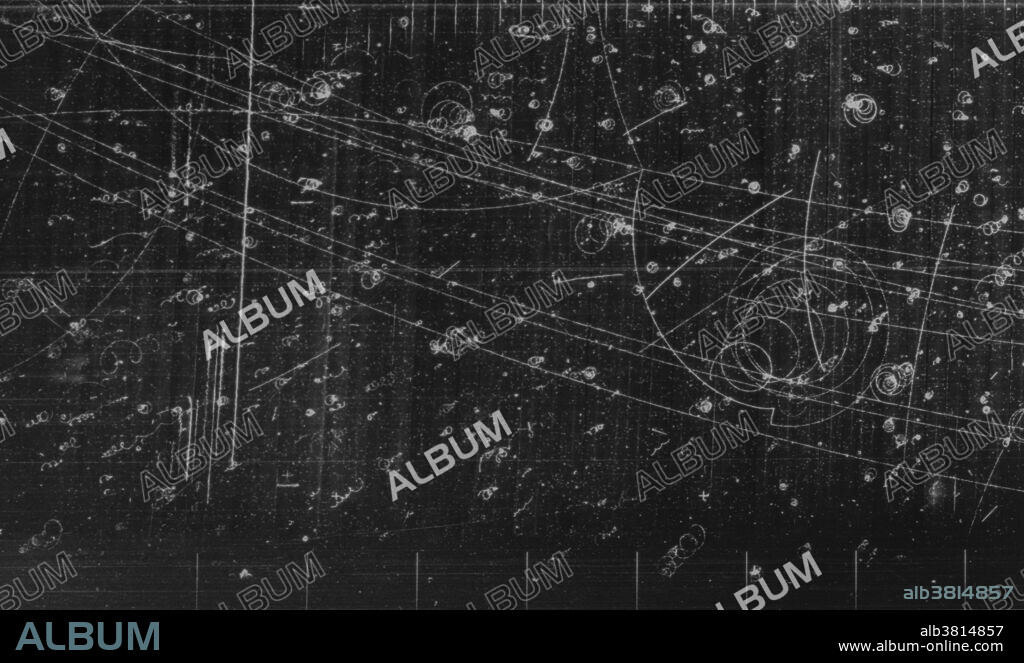alb3814857
Antiproton Annihilation, Bubble Chamber Event

|
Add to another lightbox |
|
Add to another lightbox |



Buy this image.
Select the use:

Title:
Antiproton Annihilation, Bubble Chamber Event
Caption:
Bubble chamber event: One 4-prong antiproton annihilation. Photograph dated August 17, 1961. Bubble Chamber-1042. The antiproton is the antiparticle of the proton. An antiproton consists of two up antiquarks and one down antiquark. The properties of the antiproton that have been measured all match the corresponding properties of the proton, with the exception that the antiproton has electric charge and magnetic moment that are the opposites of those in the proton. The antiproton was experimentally confirmed in 1955 by University of California, Berkeley physicists Emilio Segrè and Owen Chamberlain, for which they were awarded the 1959 Nobel Prize in Physics. A bubble chamber is a vessel filled with a superheated transparent liquid (most often liquid hydrogen) used to detect electrically charged particles moving through it.
Category:
black & white • Science: History
Credit:
Album / LBNL/Science Source
Releases:
Image size:
5100 x 3037 px | 44.3 MB
Print size:
43.2 x 25.7 cm | 17.0 x 10.1 in (300 dpi)
Keywords:
1960S • 1961 • 20 20TH XX XXTH TWENTIETH CENTURY • 20 XX TWENTIETH CENTURY • 20TH CENTURY • 20TH • 4 PRONG • 4-PRONG • 60 60'S DECADE SIXTY YEARS • 60 60'S DECADE YEARS SIXTY SIXTIES • 60'S • 60S • ANTIPROTON ANNIHILATION • ANTIPROTON • AUGUST 17 • AUGUST 17TH • BLACK & WHITE • BUBBLE CHAMBER EVENT • BUBBLE CHAMBER • BW • CHARGED PARTICLE • DISPLAY • HISTORIC • HISTORICAL • HISTORY • LAWRENCE BERKELEY NATIONAL LABORATORY • LBNL • PARTICLE CHAMBER • PARTICLE DETECTION • PARTICLE DETECTOR • PARTICLE PHYSICS • PARTICLE TRACK • PHYSICS • RESEARCH • SCIENCE • SCIENCE: HISTORY • SIXTIES • SIXTIES, THE • SUB-ATOMIC PARTICLE • SUBATOMIC PARTICLE • TWENTIETH CENTURY • YEARS DECADE'S SIXTY SIXTIES 60 60 1960
 Pinterest
Pinterest Twitter
Twitter Facebook
Facebook Copy link
Copy link Email
Email
